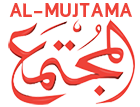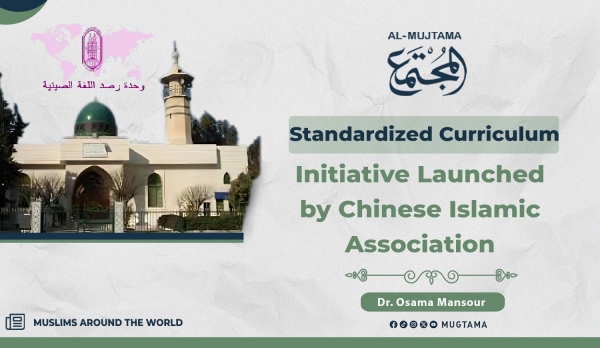Chinese Islamic Association Moves to Standardize Islamic Education Curriculum. Featured
At the beginning of this week, the Islamic Association held a meeting chaired by Yang Fa Ming, the president of the association, attended by Mu Qi Fa, the vice president of the association and vice president of the Institute of Islamic Sciences, as well as several Islamic figures, mosque imams, and scholars from across the country.
In his speech, Yang Fa Ming, the president of the Islamic Association, stated that standardizing high-quality curriculum materials in Chinese Islamic schools and institutions would enhance the presence of Islam in China and provide a good opportunity to build an Islamic intellectual system that combines dedication to religion and love for the homeland. It supports the thought of Chinese President Xi Jinping for building a harmonious community that unites all sects and beliefs under the banner of the nation.
He added that paying attention to the selection of the quality of curriculum materials strongly supports the development of high-level religious talents, enhances the healthy climate of Islam in China, and significantly contributes to the comprehensive development and modernization of building a strong and harmonious China that meets the ambitions of our great homeland.
The core curriculum materials include 13 books, which are:
- The Holy Quran.
- The Five-Part Book: (It consists of 5 parts: Morphology, Moroccan, Zanjani, Hundred Acts, and the Lamp, which is a foundational book specifically for the science of morphology and grammar of the Arabic language).
- Light of the Lamp: (This is an explanation of the book "The Lamp," which is the last part of the Five-Part Book. It was authored by the Persian scholar Abu al-Futuh Nasir ibn Abd al-Sayyid al-Maturidi (1143–1213). It is a clear grammar book for the Arabic language, and there is a saying that states: "Whoever masters the Light of the Lamp can study Arabic books without the help of others, and if it weren't for it, one's heart would be troubled regarding these books.")
- Malā Jamī: Also known as the Explanation of Al-Kāfiyah, authored by Nur al-Din Abd al-Rahman ibn Ahmad al-Jāmī (d. 898 AH). It is one of the explanations of the book Al-Kāfiyah by Sheikh Jamal al-Din ibn Umar al-Hajib al-Mālikī (d. 646 AH), considered one of the best grammar books for the Arabic language and is widely popular in Chinese mosque schools.
- Al-Bayān: Also known as the Summary of the Key, it is an explanation of the book Al-Miftāh written by Jalal al-Din al-Qazwini, explained by Sheikh Saad al-Din al-Taftazani. It is an educational book for the rhetoric of the Arabic language.
- The Beliefs of Islam by Saad al-Din al-Taftazani: It is one of the best books dedicated to the science of theology, translated into Chinese by Sheikh Yang Chong Ming, and named Jiaoxinjing; meaning Heart of the Religion.
- Explanation of Al-Wiqāyah by its author Ubaidullah ibn Mas'ud known as Taj al-Shari'ah: It is a Hanafi jurisprudential book, translated into Chinese by Sheikh Wang Jing Chai.
- The Sermons: It is a book that collects 40 explained Hadiths in Persian, translated into Chinese by Sheikh Li Moi Chen.
- The Forty: It is named so because it includes 40 Hadiths as well. It differs from the aforementioned Sermons book in that its annotations are influenced by the Sufi perspective, while the annotations in the Sermons book are influenced by the esoteric perspective.
- "Shadows of Luminescence": This is a book in Persian and is considered one of the best books in the science of monotheism. It has been translated into Chinese by Sheikh Sheh Chee Ling.
- "Al-Marsad": This is a philosophical book in Persian, focused on the worship of God and the refinement of the soul. The scholar Wutson Qi translated it into Chinese.
- "Air of the Method": This is a grammatical book in Persian written by the Chinese Sheikh Zhang Qi Mi.
- "Golestan": This literary work in Persian has been in China for over 600 years and has a significant impact due to the availability of students studying it. There are two translations of this book, one by Sheikh Wang Jin Chai and the other by Xue Jian.
Following the increase in communications between China and Arab countries in the second half of the 20th century, along with many students from Islamic schools and institutions traveling to study in Arab countries, and the growing connections between Islamic religious associations and many religious institutions in Arab countries, numerous academic materials prescribed in universities and Islamic schools in countries like Egypt, Kuwait, and Saudi Arabia were transferred to Islamic schools and institutes.
With the diversity of Islamic sects and their orientations, some other books emerged to accompany the thirteen ancient books. For example, some study: the Tafsir of Al-Jalalayn, the Tafsir of Al-Baydawi, "Pearls and Corals", "Aqa'id Al-Nasafi", "Al-Taj Al-Jami' li Al-Usul", "The Praises", and "Al-Mukhammis" (a Sufi book), while others study Ibn Kathir's Tafsir, "Al-Aqeedah Al-Tahawiyyah", the orientations of Muhammad ibn Abdul-Wahhab, "Fath Al-Bari", and "Zad Al-Ma'ad" by Ibn Qayyim. All this is in addition to subjects in Arabic language, the history of the Arabs, and the history of Islam.
Given the wealth of study materials and their diversity, along with the difference in orientations and sources, the Chinese Islamic Association saw the necessity to unify these study materials to avoid potential ideological and doctrinal disputes that could lead to problems within the Muslim community in China, as had occurred during previous historical periods.
The attendees, including imams, scholars, and prominent Islamic figures, participated in discussions about the proposed study materials, selecting what was appropriate for the stage, refining and reviewing some old books, and creating an urgent plan to finalize these materials as soon as possible.
The attendees agreed on adopting four main books in three subjects: two books in Tafsir, one book in Hadith, and one book in Fiqh. The Tafsir books are Al-Jalalayn and Al-Baydawi, while the Hadith book is "Mishkat Al-Masabih". As for Fiqh, the book on acts of worship according to the Hanafi school was adopted, considering that the majority of Muslims in China follow the Hanafi school. These four books have previously been translated into Chinese by some Chinese Muslims, and the meeting recommended verifying these books and reviewing the translated texts again before formally adopting them.
The Islamic Association has approved the teaching of these books in the ten official Islamic science institutes spread across China, while mosque-affiliated schools and community schools have retained their old curricula without changes.


